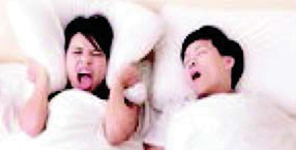Snoring

Snoring occurs when air flows past relaxed tissues in the throat causing the tissues to vibrate as one breathes, which creates irritating sounds. The irregular airflow may be caused by a passageway blockage and may influence the soft palate and uvula to collapse.
OMT
HELPS

OM therapists are able to identify signs and symptoms of snoring and sleep disordered breathing, of which snoring is one. By using sequential exercises to develop the proper tongue rest position and swallowing, activating the palatoglossus and genioglossus muscle, developing a lip seal and normalizing the breathing, the patient’s snoring frequency and intensity will reduce.
IF NOT
TREATED

Snoring frequency and intensity may increase, leading to OSA and family problems. Oral sleep appliances and/or surgery may be recommended by sleep specialists to increase the airway space such as UPP or orthognathic surgery.

18. Snoring
–Alexopoulos EI, Charitos G, Malakasioti G, Varlami V, Gourgoulianis K, Zintzaras E, Kaditis AG. Parental History of Adenotonsillectomy Is Associated with Obstructive Sleep Apnea Severity in Children with Snoring. J Pediatr. 2014 Feb 25. pii: S0022-3476(14)00027-4. doi: 10.1016/j.jpeds.2014.01.021. [Epub ahead of print]
–Bonuck K, Rao T, Xu L. Pediatric sleep disorders and special educational need at 8 years: a population-based cohort study. Pediatrics. 2012 Oct;130(4):634-42. doi: 10.1542/peds.2012-0392. Epub 2012 Sep 3.